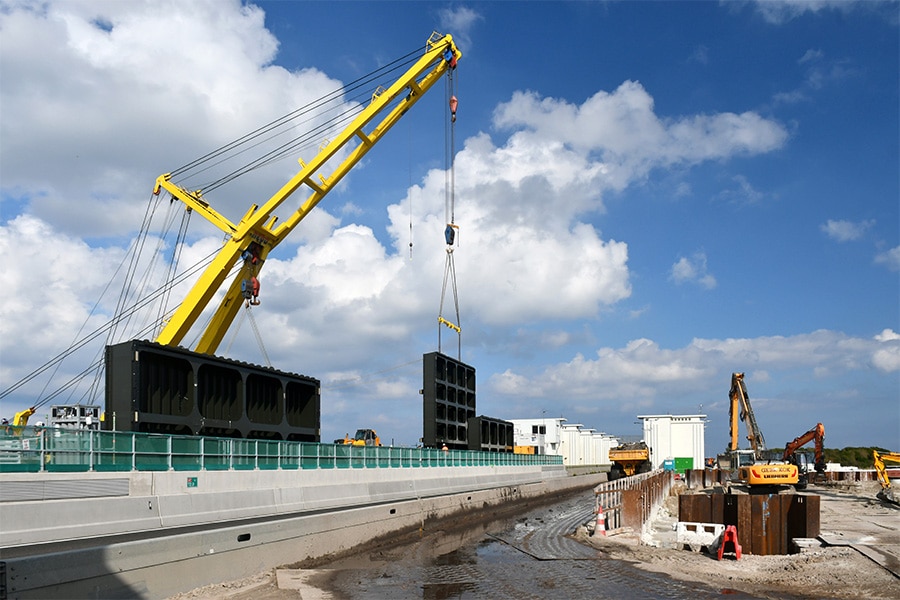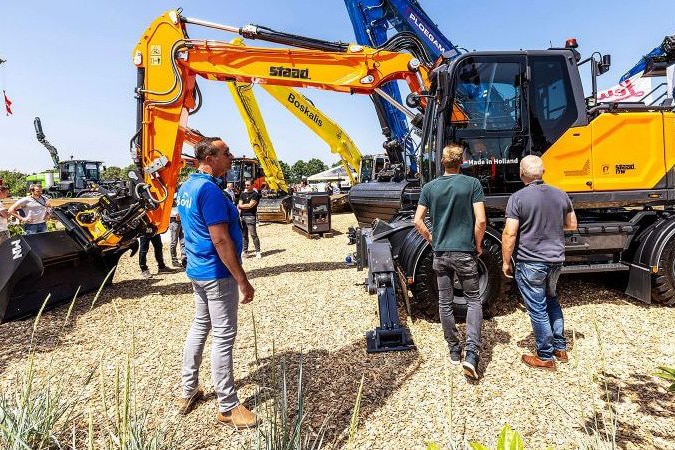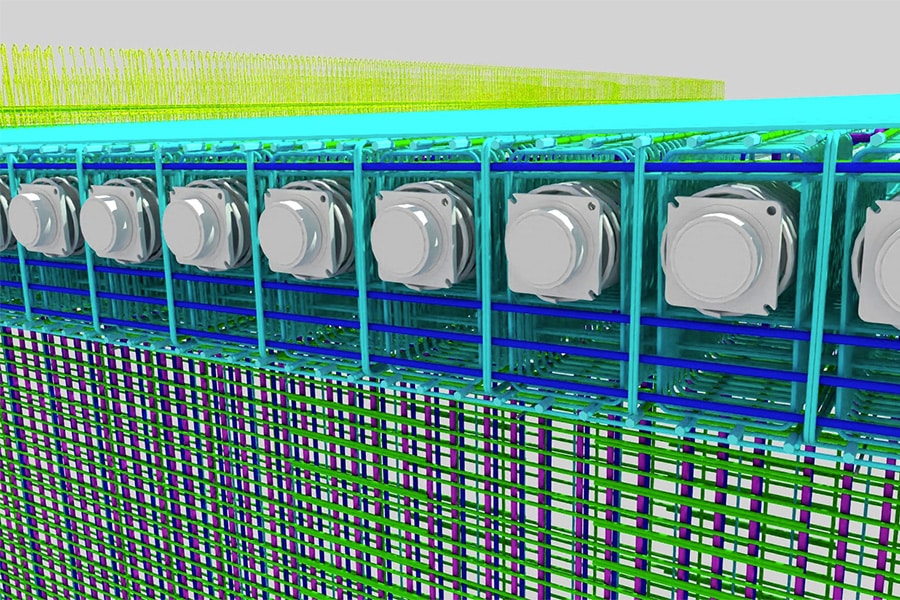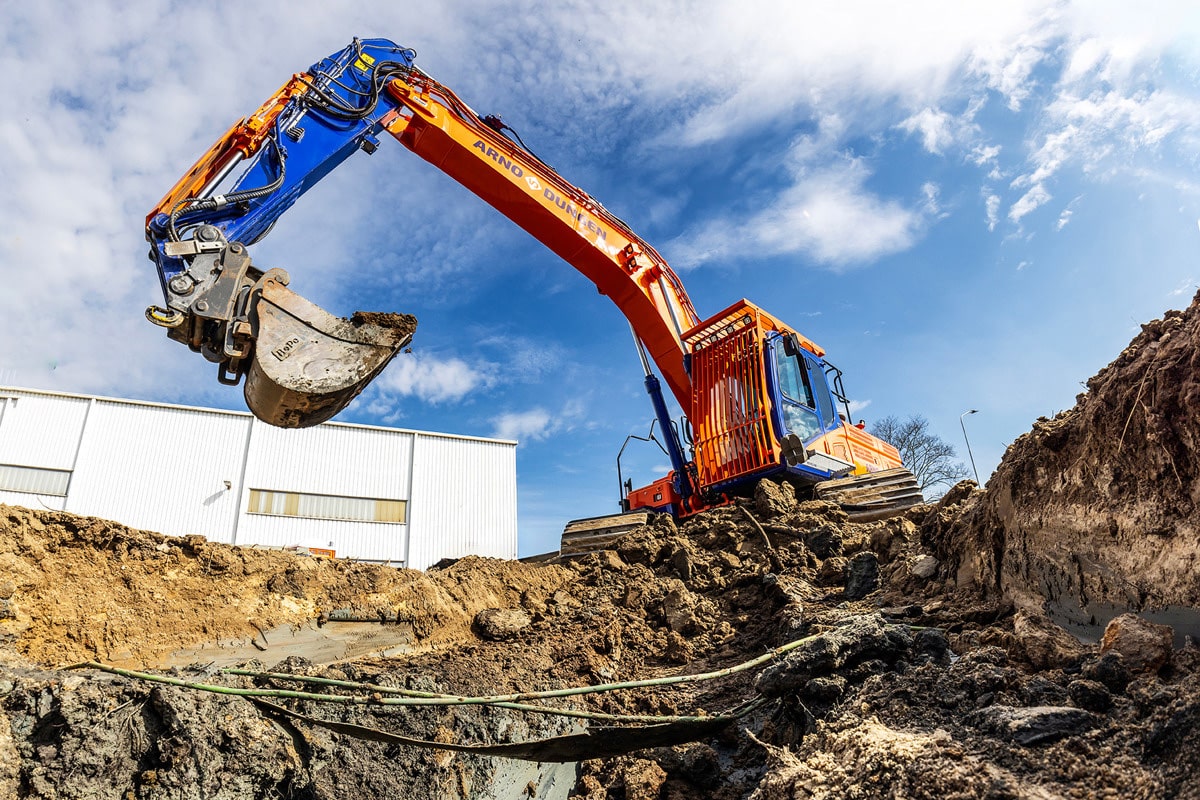
New plastic composite pipe prevents diffusion
With a storage capacity of about six billion cubic meters of natural gas, RAG Austria AG is Austria's largest gas and thus energy storage company. Delivered gas is temporarily stored in depleted natural gas reservoirs. Since natural gas absorbs moisture in the reservoir, it is dried and cleaned after extraction. This produces mine water, which is pumped back into the gas storage facility. Salts and hydrocarbons dissolved in the water must not be released into the environment under any circumstances. AGRU therefore supplied a new type of diffusion-tight plastic composite pipe, the AGRU Sureline IV Barrier Pipe. The expert installation was performed by RTi Austria GmbH, which specializes in the trenchless installation of pipelines.
RAG Austria AG operates one of the largest porous storage facilities in Central Europe. The 7Fields natural gas storage facility with a storage volume of 1.7 billion m³ consists of several former gas fields in Upper Austria and Salzburg. The facility, which is unique in Europe, has five storage stations connected by natural gas pipelines to both the national and international grid and a total of three metering stations. After the natural gas is extracted, the cavities are reused as underground natural gas storage facilities. They offer the highest degree of natural security and solve the space problem of temporary storage. Thus, unlike electricity, gas can be stored safely and in large quantities.

Safe transportation
During the extraction and drying of the temporarily stored gas, mine water is produced. RAG Austria AG pays attention to the highest environmental compatibility in all work processes and was looking for a pipeline system that effectively prevents the dispersion of hydrocarbons from the mine water. A steel pipeline installed several years ago was corroding due to the high salt content and had to be replaced. Selected for the new reservoir pipeline was the diffusion-tight multilayer pipe AGRU Sureline IV Barrier Pipe from AGRU Kunststofftechnik GmbH. The fully pressure-resistant plastic composite pipe was specially developed for transporting contaminated wastewater or chemicals through ecologically sensitive areas. It can also be used to transport drinking water or ultrapure water through contaminated soils.
The revolutionary 3-layer construction of high-quality, durable plastics effectively prevents creeping soil contamination through permeation and guarantees maintenance-free operation. The internally stable media pipe made of point-load resistant PE 100-RC is permanently corrosion-free and prevents crusting through smooth inner surfaces. On top of this lies the diffusion-tight barrier layer made of high-quality plastic. It protects the environment from all media transported in the pipe and must not diffuse into the environment under any circumstances. An external protective sheath of scratch-resistant PP also allows installation with alternative trenchless installation techniques such as recessed drilling, ground rocket or plow methods without causing deeper scratches. Joining technology includes proven methods such as heated element butt welding or heated spiral welding.

Double tube, double safety
In order to continuously monitor the safer transport of the aggressive primeval sea water, the engineers at RAG Austria AG opted for a double pipe system with integrated leak detection. To this end, the media-bearing Sureline IV Barrier Pipe was drawn into a larger-diameter Sureline III pipe, which serves as a protective outer pipe for maximum safety. To ensure a clean annulus, the outside of the Sureline IV Barrier Pipe was cleaned with hot steam during the retraction process. The remaining annular gap between the two pipes is intended as a pressure-resistant containment area to prevent media leakage in case of leakage.

4,800 m Sureline IV Barrier
The rehabilitation of the reservoir pipeline took four months. In each case, 4,800 m of Sureline IV Barrier pipe in da 140 mm SDR 17 and Sureline III pipe in da 160 mm SDR 17 and associated fittings of PE 100-RC were used. To remove the existing steel pipe, several engineering solutions were considered. The most cost-effective alternative was a specially developed trenchless installation technique. The Sureline III pipe was installed without using trenches by the method of recessed drilling. The finished pipeline with double containment is designed for pressure peaks up to 25 bar, with an operating pressure of 10 bar. The maximum media temperature is 50 °C. One of the challenges during construction was laying the pipeline. Using flush drilling, two streams had to be crossed at a depth of 4.5 m in a 90 m radius.



